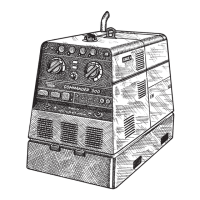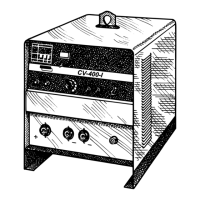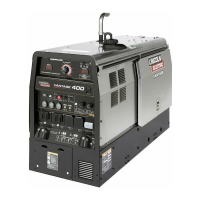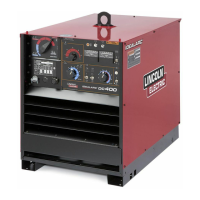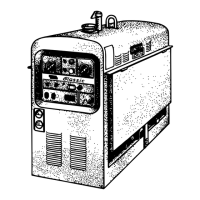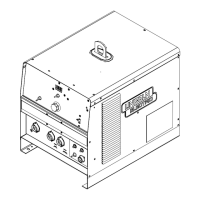Return to Section TOC Return to Section TOC Return to Section TOC Return to Section TOC
Return to Master TOC Return to Master TOC Return to Master TOC Return to Master TOC
THEORY OF OPERATION
E-5 E-5
Commander 400
FIGURE E.6 – SCR OPERATION
SCR OPERATION
A silicon controlled rectifier (SCR) is a three terminal
device used to control rather large currents to a load.
An SCR acts very much like a switch. When a gate sig-
nal is applied to the SCR, it is turned ON and there is
current flow from anode to cathode. In the ON state the
SCR acts like a closed switch. When the SCR is turned
OFF, there is no current flow from anode to cathode
and the device acts like an open switch. As the name
suggests, the SCR is a rectifier, so it passes current
only during positive half cycles of the AC supply. The
positive half cycle is the portion of the sine wave in
which the anode of the SCR is more positive than the
cathode.
When an AC supply voltage is applied to the SCR, the
device spends a certain portion of the AC cycle time in
the ON state and the remainder of the time in the OFF
state. The amount of time spent in the ON state is con-
trolled by the Gate.
An SCR is fired by a short burst of current into the gate.
This gate pulse must be more positive than the cathode
voltage. Since there is a standard PN junction between
gate and cathode, the voltage between these terminals
must be slightly greater than 0.6V. Once the SCR has
fired it is not necessary to continue the flow of gate cur-
rent. As long as current continues to flow from anode
to cathode, the SCR will remain on. When the anode
to cathode current drops below a minimum value,
called holding current, the SCR will shut off. This nor-
mally occurs as the AC supply voltage passes through
zero into the negative portion of the sine wave. If the
SCR is turned on early in the positive half cycle, the
conduction time is longer, resulting in greater SCR out-
put. If the gate firing occurs later in the cycle, the con-
duction time is less, resulting in lower SCR output.
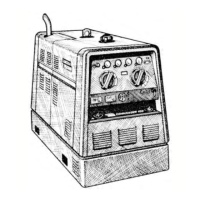
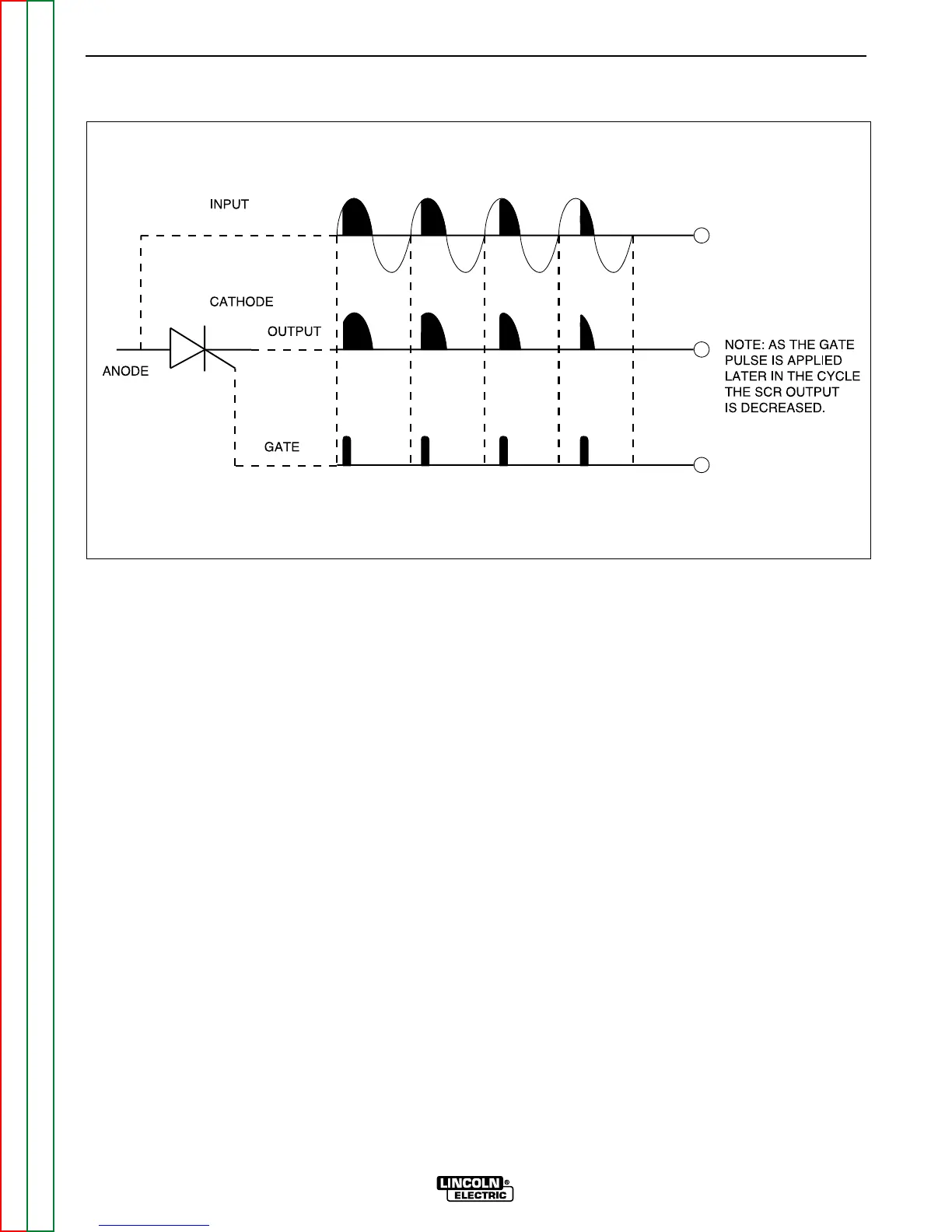